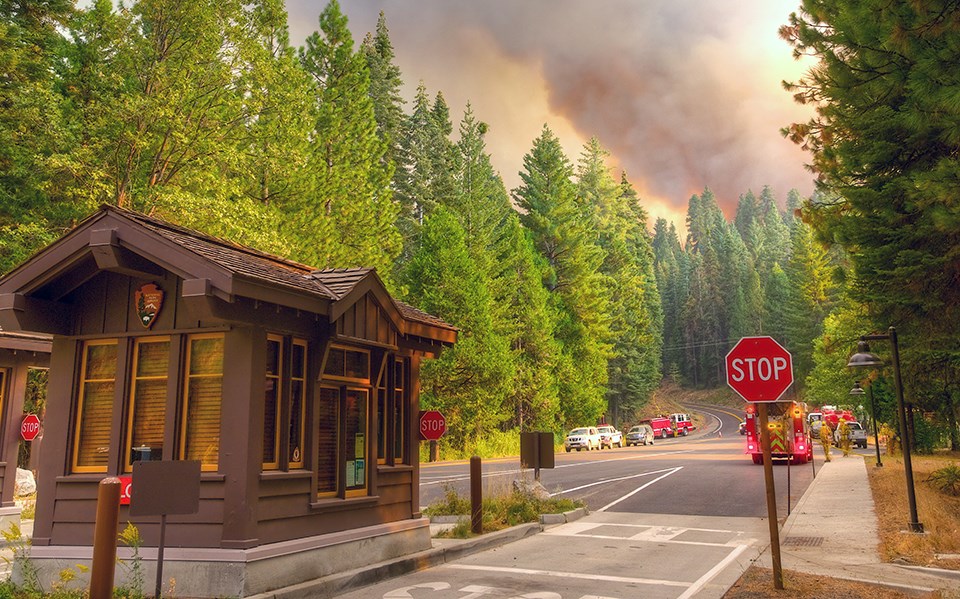Last updated: January 11, 2017
Article
Multiyear Prescribed Fire Treatments Protect Community during Rim Fire

Past hazardous fuels reduction treatments and prescribed fire have created defensible space for the Hodgdon Meadow area in Yosemite NP. The Rim fire of August 2013 put this theory to the test, and the treatments worked to protect this wildland urban interface.

Hodgdon Meadow, in Yosemite National Park, is a wildland urban interface area, consisting of the Big Oak Flat park entrance station, 60 residents, a campground, ranger and fire stations, and maintenance structures. It includes a significant natural area of meadows, rare plant species, and old growth sugar pines. Designated wilderness is adjacent to the community.
The Hodgdon Meadow area has no recorded park fire history between 1930 and 1990, although natural fire history is evident--several mature trees exhibit numerous fire scars. Since 1990, a hazardous fuel reduction program, including mechanical thinning, pile burning and broadcast burning, has been implemented to protect private and public structures around the Hodgdon Meadow area. The most recent project was in 2012, with three others since 2003. There was one human-caused wildfire in 2005.
These past treatments have created defensible space for the Hodgdon Meadow area. Yosemite fire managers predicted that through the years, fuel reduction work within the entire prescribed fire unit would reduce the likelihood and effects of catastrophic fires.
The Rim fire began on August 17, 2013, on the Stanislaus National Forest in steep and inaccessible terrain. It started during the hottest part of summer and during the second year of significant drought in the Sierra Nevada. On Monday, August 19, it was 800 acres, and by noon that day it had doubled in size. Although the fire was 11 miles from Yosemite National Park, park fire managers began implementing contingency plans in case the fire reached park boundaries.
On Thursday, August 22, the Rim fire was 53,000 acres, with 11,000 acres burning within the park boundary and threatening Hodgdon Meadow wildland urban interface, and the Merced and Tuolumne groves of sequoias. Evacuations of the community were ordered. Park Superintendent Don Neubacher gave firefighters permission to use all necessary tactics and tools, including retardant and dozers, not typically used in national parks, to protect park resources. Firefighters also began an approximately 15,000-acre firing operation, timed to the best weather conditions possible, to protect the Hodgdon Meadow community and reduce the movement of the fire further into the park. At the height of the Rim fire, 5,200 firefighters from agencies across the United States were working on the fire. When the smoke cleared days later, fire managers found that the Rim fire went around treated areas due to reduced surface fuels and the more open forest canopy.

There were no losses in the Hodgdon Meadow wildland urban interface. Park infrastructure losses were confined to a historic wilderness cabin, a campground composting toilet and 15 miles of park boundary fencing. Yosemite’s 40 years of prescribed and managed wilderness fire, combined with thinning and clearing projects in the park, enabled fire managers to use fire as an effective tool.
In the coming years, scientists will study the Rim fire’s impact on the land, including the relationship of past treatments and postfire effects in relationship to fire size and mitigation. The empirical data gathered may indicate that recent prescribed fire treatments prevented catastrophic losses within the Hodgdon area.
Contact: Gary Wuchner, fire communication and education specialist
Email: e-mail us
Phone: (209) 372-0480 or (209) 375-9574
